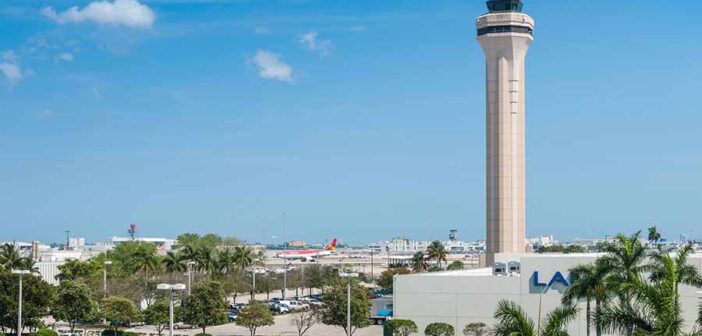Miami International Airport, known as MIA, serves as a major gateway to Latin America and the Caribbean, located 13 kilometres west-northwest of downtown Miami. Handling over 56 million passengers in 2024, this bustling hub operates more than 1,000 daily flights to 185 destinations across 85 countries, served by over 90 airlines, including American Airlines, Delta, and United. Its three-terminal layout, extensive amenities, and robust transport options provide a practical experience for travellers exploring Florida or connecting globally.
The passenger experience at MIA is generally efficient, though its size and high traffic require careful planning. The airport’s three terminals—North (Concourse D), Central (Concourses E, F, G), and South (Concourses H, J)—span six concourses with 131 gates. Check-in and security typically take 30 to 45 minutes, but peak periods, such as mornings or holiday seasons, can see queues extending to an hour, particularly in Concourse D, home to American Airlines’ hub. Passengers are advised to arrive two hours early for domestic flights and three for international to account for security, immigration, and customs processes. The Skytrain in Concourse D, covering its mile-long stretch, speeds up gate access, though occasional maintenance may require shuttle carts. Signage can be confusing, especially for transfers between terminals, and some travellers note inconsistent staff assistance. Accessibility is well-supported with ramps, lifts, and wheelchair assistance, though pre-booking with airlines ensures timely service. Self-service kiosks and mobile check-in streamline processes for most airlines.
Access to the airport is straightforward, with multiple transport options. The Metrorail Orange Line connects to downtown Miami in about 20 minutes for £2.25, accessible via the Miami Central Station stop. Miami-Dade Transit buses, including routes 37, 42, and the 150 Miami Beach Express, depart from the same station, costing £2.25.
Taxis, available on the ground level, charge around £20 to downtown, while rideshare services like Uber operate from designated zones, with fares starting at £15. The Brightline high-speed rail links to Fort Lauderdale and West Palm Beach for regional travel. Car rental agencies, including Avis, Hertz, and Enterprise, are housed at the Rental Car Center, reached via the free MIA Mover from Level 3. The drive to downtown via the Dolphin Expressway takes 15 to 20 minutes, though traffic or ongoing construction, such as perimeter fence upgrades, can add delays. Parking options include Dolphin and Flamingo garages, with valet and electric vehicle charging, starting at £15 per day, though off-site lots offer cheaper alternatives.
The airport’s layout is expansive but manageable, with moving walkways on Level 3 connecting terminals. Concourse D is the largest, with 51 gates and four Skytrain stations, while Concourses E, F, H, and J handle international flights, with customs facilities in D, E, and J. Concourse G lacks direct immigration access, requiring a transfer. The MIA Mover links terminals to the Rental Car Center and transit hub in 3 minutes. Congestion at security checkpoints or immigration in Concourse J can slow progress during peak times, and long walks, especially in Concourse E, may challenge some passengers. A £9 billion modernisation plan, including a new Concourse K by 2029, aims to improve flow and capacity.
Dining and retail options are extensive across all terminals. Concourse D offers fast-food outlets like McDonald’s and KFC, open 4:30 AM to 9:00 PM, alongside Cuban-inspired Café Versailles. Concourses H and J feature La Pausa for fine dining and Bongos Cuban Café, open 11:00 AM to 8:00 PM. Duty-free shops in all terminals sell luxury goods, electronics, and souvenirs, though prices are higher than in Miami. Booklink & Café in Concourse D provides magazines and snacks. Travellers recommend dining in the city for better value. Free Wi-Fi, via the “MIA Free WiFi” network, is reliable, and the MIA app offers real-time navigation and flight updates.
Facilities cater to a wide range of needs. Currency exchange counters and ATMs operate 24/7, with Travelex in Concourse D. The Miami International Airport Hotel in Central Terminal E offers 260 soundproof rooms and meeting spaces. Premium lounges, including the American Airlines Admirals Club and American Express Centurion Lounge in Concourse D, provide showers, snacks, and Wi-Fi for £20 to £40, accessible via membership or payment. Baggage wrapping costs £9, and self-service luggage carts are available. Lost and found desks operate in each terminal, and a non-denominational chapel in Concourse D offers a quiet retreat. Smoking is restricted to outdoor zones landside. Accessibility features include handicapped parking and multilingual staff, though elevator outages during modernisation may disrupt mobility.
On-time performance is generally reliable, with real-time updates available via the airport’s website or apps like Flightstats.com. Delays, averaging 30 minutes, can occur due to high passenger volumes, summer thunderstorms, or air traffic control issues. Ongoing construction, including 616 conveyance units under renovation, may cause minor disruptions. EU regulations allow up to €600 compensation for delays over three hours if airline-related.
Connections are seamless for domestic flights, with minimum connection times of 55 minutes, though international transfers require 60 to 90 minutes due to customs and security. The MIA Mover and moving walkways ease terminal transfers, but passengers connecting from Concourse G to J must re-clear security. American Airlines’ hub status ensures smooth connections to Latin America and the Caribbean, with popular routes to Sمo Paulo, London, and New York. Checking terminal assignments is key to avoid delays.




